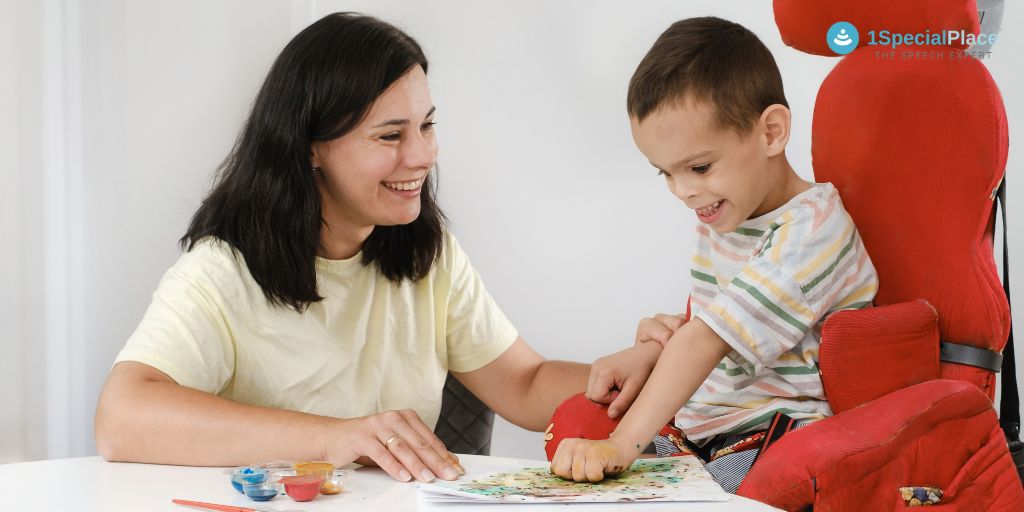
10 Sensory Integration Exercises for Children with Autism
10 Sensory Integration Exercises for Children with Autism
Autism spectrum disorder (ASD) is a developmental disorder that affects communication, social interaction, and behavior. Children with autism may also have difficulties processing sensory information, which can affect their ability to function in daily activities. Sensory integration exercises can be helpful for children with autism to improve their sensory processing skills and overall functioning. Here are ten sensory integration exercises that can be useful for children with autism:
Swinging:
Swinging can be a fun way for children with autism to improve their vestibular processing skills. You can try using a therapy swing or a traditional playground swing to help your child with sensory integration. It provides a variety of sensory experiences, including vestibular (movement) and proprioceptive (body awareness) input. Swinging can also help improve balance and coordination. Try different types of swings, such as a traditional swing, a hammock swing, or a sensory swing with added textures or weights. Make sure to supervise your child closely and use appropriate safety measures.
Yoga:
Yoga is a great sensory integration exercise for children with autism as it helps improve body awareness, balance, and coordination. It also promotes relaxation and reduces stress and anxiety. You can start with simple yoga poses, such as downward dog, child’s pose, and tree pose. Use visual aids, such as pictures or videos, to help your child understand and follow the poses. You can also try partner yoga, where you and your child do the poses together. Yoga can be helpful for children with autism to improve their body awareness, balance, and coordination. It can also help them learn to regulate their breathing and reduce stress.
Finger painting:
Finger painting can be a great way for children with autism to engage in sensory play. It can help improve their tactile processing skills and encourage creativity.
Tactile play:
Playing with different textures can be helpful for children with autism to improve their tactile processing skills. You can create a sensory bin with items such as rice, sand, or beans for your child to explore.
Heavy work activities:
Heavy work activities, such as carrying weighted objects or pushing/pulling heavy items, can be helpful for children with autism to improve their proprioceptive processing skills. This can help with body awareness and regulation.
Balloon play:
Playing with balloons can be a fun way for children with autism to improve their visual tracking skills and hand-eye coordination.
Music therapy:
Music therapy can be helpful for children with autism to improve their auditory processing skills and promote relaxation. It can also be a fun way to engage in social interaction.
Sensory walks:
Taking sensory walks can be helpful for children with autism to improve their sensory processing skills and engage in physical activity. You can encourage your child to explore different textures, smells, and sights along the way.
Bouncing on a trampoline:
Bouncing on a trampoline can be helpful for children with autism to improve their vestibular processing skills and engage in physical activity. It can also be a fun way to improve body awareness and coordination. It provides a lot of proprioceptive input, which can help improve body awareness and coordination. You can try different activities on the trampoline, such as bouncing, jumping, or even playing catch with a soft ball. Make sure to supervise your child closely and use appropriate safety measures, such as a safety net and padding.
Therapeutic listening:
Therapeutic listening can be helpful for children with autism to improve their auditory processing skills. This involves listening to specially designed music or sounds through headphones to stimulate the auditory system.
It’s important to note that sensory integration exercises should be tailored to meet the specific needs and preferences of each individual child with autism. It’s also important to work with a licensed therapist or healthcare professional who specializes in sensory integration to ensure that the exercises are safe and effective.
In addition to sensory integration exercises, there are other strategies that can be helpful for children with autism to improve their sensory processing skills. These include:
-
Providing a sensory-friendly environment: This may involve reducing sensory stimuli in the environment, such as loud noises or bright lights, or providing sensory input, such as a weighted blanket or fidget toy.
-
Using visual supports: Visual supports, such as pictures or schedules, can be helpful for children with autism to understand expectations and routines.
-
Incorporating sensory breaks: Sensory breaks can be helpful for children with autism to regulate their sensory input and prevent sensory overload. This may involve taking a break to engage in a sensory integration exercise or other calming activity.
Overall, sensory integration exercises can be a helpful tool for children with autism to improve their sensory processing skills and overall functioning. It’s important to work with a licensed therapist or healthcare professional who specializes in sensory integration to develop a personalized plan that meets the specific needs and preferences of each individual child. With the right support and strategies, children with autism can thrive and reach their full potential.
- News of the month for March 2024 - April 16, 2024
- News of the month for Jan 2024 - January 29, 2024
- Shining a Light on the Unseen: The Importance of Syndrome Awareness - January 23, 2024

Leave a Comment
(0 Comments)